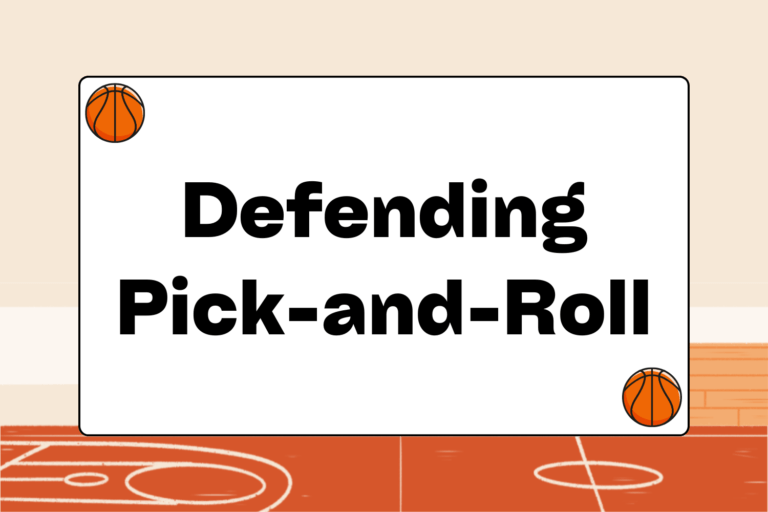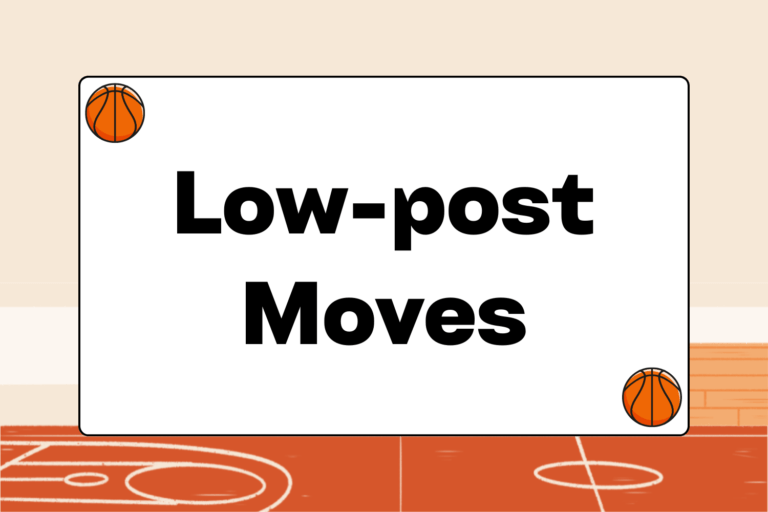The give-and-go is one of the oldest and most fundamental plays in basketball. It’s easy to master and effective within any offensive set. Unfortunately, many coaches and players overlook the play’s ability to create an easy scoring opportunity.
The give-and-go is flexible enough that it can be run by any two players on the floor — one having the ball and the other receiving the initial pass. In general, the point guard initiates the give-and-go after bringing the ball upcourt. However, it can be run by a wing and a post player, or even two post players.
Pass & Cut
In the basic give-and-go, the ball-handler simply passes to a teammate and cuts to the basket. If the cutting man is able to free himself from the defender, he should receive a return pass as he’s cutting for an easy basket:
- The pass can be a lob, bounce pass, or straight pass. However, it must lead the cutter on his path toward the basket.
- The cutter should help the passer by raising his hand to signal that he’s open and ready for the pass.
In addition to its simplicity, the beauty of the give-and-go is the many options offensive players have when running it. How the cutter and passer react depends on the defensive players involved.
The Defender Goes for the Fake
When the defender moves with the initial pass or turns to watch it, the cutter should make a hard cut directly to the basket. Both offensive players should look for the reaction of the cutter’s defensive man to determine if a pass should be made. The cut must be quick enough so that the defensive player can’t recover.
The Defender Stays with the Passer
When the defender stays home, the cutter should make a fake or V-cut, starting away from the basket and cutting sharply to the hole. Good cuts follow the slow-then-fast technique to get defensive players off-balance. Another move is to fake receiving a pass by raising your hands, which can cause the defensive player to overplay the passing lane.
Hot Tip: Stay Involved
For the give-and-go to work, the remaining three offensive players must occupy their defensive players by decoying and creating space. If the other defensive players are occupied, they will be unable to help defensively to guard the cutter or passer.
Flexibility
The give-and-go’s strength is its flexibility within any offensive set. It can be the first pass in the half-court offense from the point guard to a wing player. It can also occur later in the possession following an entry pass to a post player. It’s ideal for aggressive defensive players who’re overplaying a passing lane or anxious to double-team an effective post or wing player. However, it also can be used against passive defenders who’re unprepared for a quick cut to the basket.
There are many underutilized give-and-go chances in basketball, such as:
- Out of an in-bounds situation: The most dangerous player on the floor is usually the in-bounder. If the in-bound passer quickly cuts to the basket, he’ll often find an open passing lane.
- On the fast break: The player receiving the pass usually draws all of the recovering defense’s attention on the fast break. A return pass is often the most efficient way to the get the ball down the floor quickly for an open shot.
- Secondary break chances: Once the initial break has stalled, the defense is usually still recovering to account for every offensive player. This is a great time for the passer to cut to the hole for an easy basket.
Missed Opportunities
A cutting passer is one of the basic concepts in the motion offense, and a point guard often sprints to the basket after passing to a wing or post player. However, the cutter often fails to look for the pass, or the cut isn’t quick enough to create space. In the course of running an offense or set play, passers and cutters frequently forget to look at one of the simplest scoring chances: The pass back to the open cutter.
It’s easy for the cutter to forget to raise his hand to signal that he’s open, and the other three offensive players can sometimes forget to occupy their men. Also, the wing or post players often look for their own shot first and miss the cutting passer.
Remembering the give-and-go is easier said than done. Therefore, running a simple two-on-two drill in practice can remind players of its simplicity and turn that action into a second-nature habit.
Mental Edge
When the first cutter establishes himself as a threat, he’ll likely draw some defensive help, making it easier for other players to get open.
Two-on-two Give-and-go Drill
Begin with a ball-handler at the top of the key and another offensive player to his right at the high wing. With a defensive player on each man, let the defender guarding the wing man play passively, allowing the initial pass. The cutter then runs a V-cut to the basket. If the defender overplays the passing lane, it allows the cutter a chance to fake the cut and pop out to the perimeter for an outside shot.
The wing player can either pass or penetrate to the basket if his man overplays the passing lane. The emphasis is on making the right choice, and two-man teams can keep score and play to 10.
Option Number One
The best way to make sure players don’t overlook the give-and-go opportunity is to always make it the primary option when beginning an offensive set. This is the basis of the “Triangle,” or “High-Post,” offense used so effectively in the National Basketball Association (NBA). When the passer always looks to cut and the receiver of the pass always checks the cutting action, opportunities are created and defenses must stay on their toes.





